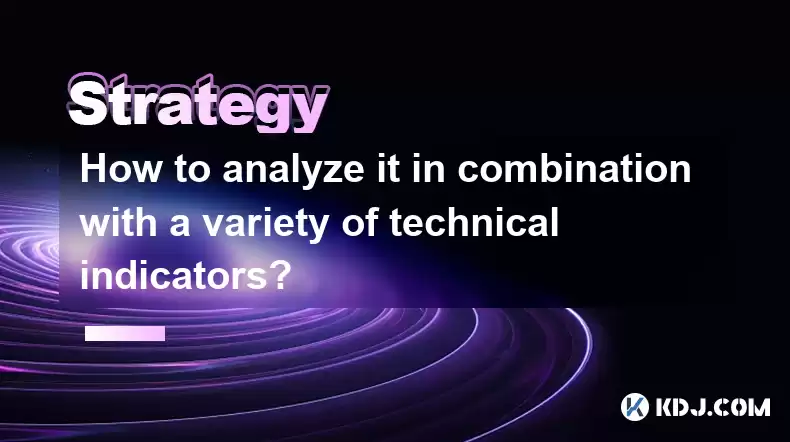-
 Bitcoin
Bitcoin $119300
2.40% -
 Ethereum
Ethereum $4254
-0.20% -
 XRP
XRP $3.184
-1.38% -
 Tether USDt
Tether USDt $1.000
0.00% -
 BNB
BNB $803.9
0.58% -
 Solana
Solana $183.1
1.50% -
 USDC
USDC $0.0000
0.01% -
 Dogecoin
Dogecoin $0.2339
-2.87% -
 TRON
TRON $0.3384
0.88% -
 Cardano
Cardano $0.8018
-0.29% -
 Hyperliquid
Hyperliquid $45.13
3.14% -
 Chainlink
Chainlink $22.10
0.96% -
 Stellar
Stellar $0.4439
-0.94% -
 Sui
Sui $3.875
-0.73% -
 Bitcoin Cash
Bitcoin Cash $570.7
0.24% -
 Hedera
Hedera $0.2589
-2.90% -
 Ethena USDe
Ethena USDe $1.001
-0.01% -
 Avalanche
Avalanche $23.83
-1.73% -
 Litecoin
Litecoin $123.8
2.61% -
 Toncoin
Toncoin $3.351
-1.13% -
 UNUS SED LEO
UNUS SED LEO $9.103
1.13% -
 Shiba Inu
Shiba Inu $0.00001356
-1.40% -
 Uniswap
Uniswap $10.93
-0.19% -
 Polkadot
Polkadot $4.057
-1.97% -
 Dai
Dai $1.000
0.01% -
 Cronos
Cronos $0.1646
4.66% -
 Ethena
Ethena $0.7974
8.11% -
 Pepe
Pepe $0.00001208
-2.89% -
 Bitget Token
Bitget Token $4.445
-1.70% -
 Monero
Monero $268.8
-2.00%
How to analyze it in combination with a variety of technical indicators?
By combining technical indicators, traders can analyze cryptocurrency market dynamics, identify trading opportunities, and refine risk management strategies for informed decision-making.
Feb 25, 2025 at 07:48 am

Key Points
- Understanding the basics of technical analysis
- Identifying key technical indicators
- Combining indicators for comprehensive analysis
- Utilizing trend analysis
- Spotting patterns and signals
- Risk management and exit strategies
How to Analyze Cryptocurrencies Using Technical Indicators
In the world of cryptocurrency trading, technical analysis plays a crucial role in making informed decisions. By studying historical price data and patterns, traders can gain insights into market trends and potential future price movements. This article will delve into the process of analyzing cryptocurrencies using a combination of technical indicators, empowering you with the knowledge to make more informed trading decisions.
1. Understanding Technical Analysis
Technical analysis is a method of predicting future price movements based on the analysis of past price data. It assumes that price action repeats itself over time and that certain patterns or indicators can provide valuable information about the underlying market dynamics.
2. Identifying Key Technical Indicators
Numerous technical indicators exist, each with its unique function and area of focus. Some of the most commonly used indicators include:
- Moving Averages: Smoothed out representations of past price action, indicating potential trend and support/resistance levels.
- Bollinger Bands: Volatility channels that show areas of overbought and oversold conditions.
- Relative Strength Index (RSI): Measures market momentum, identifying potential overbought or oversold conditions.
- Stochastic Oscillator: Compares the closing price to the price range over a given period, indicating market momentum.
3. Combining Indicators for Comprehensive Analysis
While individual technical indicators provide valuable insights, their true power lies in their combination. By combining multiple indicators, traders can gain a more comprehensive understanding of market dynamics and identify potential trading opportunities.
- Trend Analysis: Moving averages and Bollinger Bands can together identify long-term trends and potential trend reversals.
- Momentum Analysis: RSI and Stochastic Oscillator can indicate market momentum and potential turning points.
- Support and Resistance Analysis: Moving averages, Bollinger Bands, and support/resistance levels can identify areas of potential price reversals.
4. Spotting Patterns and Signals
Technical indicators generate signals and patterns that can provide valuable trading clues. Some common patterns include:
- Bullish Patterns: Uptrends, higher highs, and candlestick bullish reversal patterns.
- Bearish Patterns: Downtrends, lower lows, and candlestick bearish reversal patterns.
- Divergence: When price action diverges from indicator readings, signaling potential trend changes.
5. Risk Management and Exit Strategies
Proper risk management is crucial in cryptocurrency trading. Using stop-loss orders and profit targets can help limit potential losses and secure profits. Exit strategies based on technical indicators can help traders identify optimal exit points, such as:
- Moving Average Crossovers: Exiting when a short-term moving average crosses below a long-term moving average (bearish trend reversal).
- RSI Overbought or Oversold: Exiting when RSI reaches extreme overbought (80) or oversold (20) thresholds, indicating potential trend reversals.
FAQs
Q: Which technical indicators are considered the most reliable?
A: No single indicator is 100% reliable. However, moving averages, Bollinger Bands, and RSI are widely used and considered effective in various market conditions.
Q: How many technical indicators should I combine?
A: The number of indicators depends on individual trading strategies and risk tolerance. Combining 2-3 indicators can provide a balance between complexity and effectiveness.
Q: Can technical analysis predict future price movements with certainty?
A: Technical analysis provides valuable probabilistic insights, but it cannot predict the future with certainty. Market sentiment, news events, and other factors can influence price movements unexpectedly.
Disclaimer:info@kdj.com
The information provided is not trading advice. kdj.com does not assume any responsibility for any investments made based on the information provided in this article. Cryptocurrencies are highly volatile and it is highly recommended that you invest with caution after thorough research!
If you believe that the content used on this website infringes your copyright, please contact us immediately (info@kdj.com) and we will delete it promptly.
- KiwiSavers, Crypto Returns, and Digital Investment: Are Kiwis Missing Out?
- 2025-08-11 06:30:11
- Ruvi AI's Sales Surge: Could It Outpace Tron in the Crypto Race?
- 2025-08-11 06:30:11
- Meme Coin Mania: Is Shiba Inu Out and Little Pepe In?
- 2025-08-11 06:50:12
- Bitcoin Casino Weekly Challenge: Hitting the Jackpot in Crypto Gaming
- 2025-08-11 06:50:12
- Cardano (ADA): Riding the Bull Cycle Wave to New Heights?
- 2025-08-11 07:10:12
- Bitcoin Institutional Holdings in 2025: A Bullish Outlook
- 2025-08-11 07:15:19
Related knowledge

How to use stop-loss orders to limit potential losses?
Aug 08,2025 at 02:01pm
Understanding Stop-Loss Orders in Cryptocurrency TradingA stop-loss order is a risk management tool used by traders to automatically sell a cryptocurr...

What are the most promising altcoins to invest in?
Aug 10,2025 at 11:42am
Understanding the Role of Private Keys in Cryptocurrency WalletsIn the world of cryptocurrency, private keys are the cornerstone of ownership and cont...

How to read cryptocurrency charts and use technical analysis?
Aug 08,2025 at 11:08am
Understanding the Basics of Cryptocurrency ChartsCryptocurrency charts are graphical representations of price movements over time. These charts are es...

What is the difference between long-term holding (HODLing) and short-term trading?
Aug 10,2025 at 05:30pm
Understanding HODLing in the Cryptocurrency SpaceThe term HODL originated from a typo in a 2013 Bitcoin forum post and has since become a widely accep...

How to do your own research (DYOR) before investing in a crypto project?
Aug 08,2025 at 09:07pm
Understanding the Core Principles of DYOR in CryptocurrencyEngaging in due diligence before investing in any cryptocurrency project is essential to mi...

How to build a diversified crypto portfolio?
Aug 09,2025 at 12:21pm
Understanding the Importance of Diversification in CryptoDiversification in the cryptocurrency space is a strategy used to reduce risk by spreading in...

How to use stop-loss orders to limit potential losses?
Aug 08,2025 at 02:01pm
Understanding Stop-Loss Orders in Cryptocurrency TradingA stop-loss order is a risk management tool used by traders to automatically sell a cryptocurr...

What are the most promising altcoins to invest in?
Aug 10,2025 at 11:42am
Understanding the Role of Private Keys in Cryptocurrency WalletsIn the world of cryptocurrency, private keys are the cornerstone of ownership and cont...

How to read cryptocurrency charts and use technical analysis?
Aug 08,2025 at 11:08am
Understanding the Basics of Cryptocurrency ChartsCryptocurrency charts are graphical representations of price movements over time. These charts are es...

What is the difference between long-term holding (HODLing) and short-term trading?
Aug 10,2025 at 05:30pm
Understanding HODLing in the Cryptocurrency SpaceThe term HODL originated from a typo in a 2013 Bitcoin forum post and has since become a widely accep...

How to do your own research (DYOR) before investing in a crypto project?
Aug 08,2025 at 09:07pm
Understanding the Core Principles of DYOR in CryptocurrencyEngaging in due diligence before investing in any cryptocurrency project is essential to mi...

How to build a diversified crypto portfolio?
Aug 09,2025 at 12:21pm
Understanding the Importance of Diversification in CryptoDiversification in the cryptocurrency space is a strategy used to reduce risk by spreading in...
See all articles

























































































